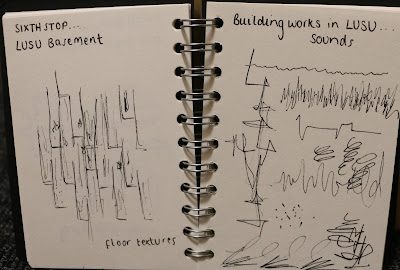As I commenced this module, I was unaware of how abstract or simplified an illustration could be, yet still communicate on a sophisticated level. Working across the module, I feel my approach to image making has become more about the meaning that can be drawn from clues rather than given to you through a literal image. Reaching the end of the module, I have been exploring visual clues and the idea of minimal information. Developing an awareness of the contexts illustrations can operate in also encouraged me to consider new approaches to image making as function and audience can entirely subvert the needs of an image. I feel that the main component I was influenced by was colour palettes. With briefs that demanded monochrome or 2-colour palettes, I had to maximise the application of these colours through manipulation of opacity and layering. My familiarity with screen-print mimicking techniques on photoshop enabled me to foster the aesthetics of print through overlay and misalignment to produce my editorial work in a quick turn around. With print as a medium I would usually work in, it was interesting to practice some print characteristics digitally to explore new potentials.
Collage and cut paper has also allowed me to explore shapes and texture. Experimentation with collage is discernible in my sketchbooks and outcomes from the ‘How To’ and ‘Judge a Book by it’s cover’ briefs. Shapes and textures compliment the application of a restricted colour palette as the edges of different patterns against one another work to create definition and mark a boundary. For me, a success of the ‘How To’ poster was the consistent use of collage across the vignettes, but a varying pattern across these textures to maintain the blanket as a permanent focal point.
I often concern my work with characters and while this worked successfully in the ‘How To’ poster to achieve consistency, I have learnt through reflection and feedback that these can be too personalised. Within my editorial roughs I explored characters but I found the very nature of editorial illustration, being for a wide audience, begs universality and simplicity. This pushed me to reject my usual approach to problem solving and initiated a more clue driven approach to image making.
An area I feel I need to develop is my use of time. While I have met all stages of the module, I have found sometimes that I have been trying to squash development work into too small a window, meaning my ideas have not been able to develop as organically as they could. I have found however that the blogging process enables me to realise my thoughts by documenting these and attempting to make sense of potential ideas. Blogging my reflections and feedback on my ‘Judge a book by its cover’ roughs helped me to make sense of what was missing from my ideas. Having researched around the theme of my book and working to issues of culture and compromise, I hadn’t successfully captured the unity discussed in the book. It was only through blogging and talking to my peers that I realised I hadn’t integrated the components of my images fully, helping me to form a strong base for development. I think a greater sense of development is notable within the book cover project as I have made more technical and practical alterations to my roughs than in other projects.
To develop my illustration practice, I will look to focus more on the development of my work from ideas to outcome rather than staying hung up on initial ideas as these are just starting points that can feed a stronger outcome. In light of this, a greater exploration of media would be effective in order to make more informed choices when producing final outcomes.




























